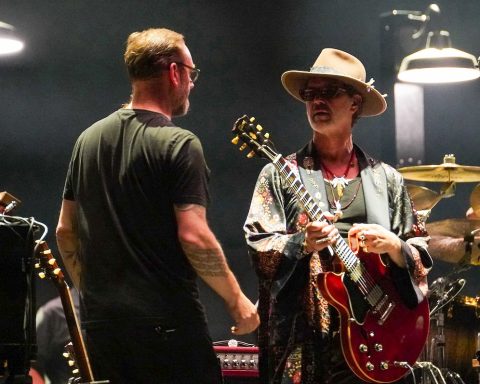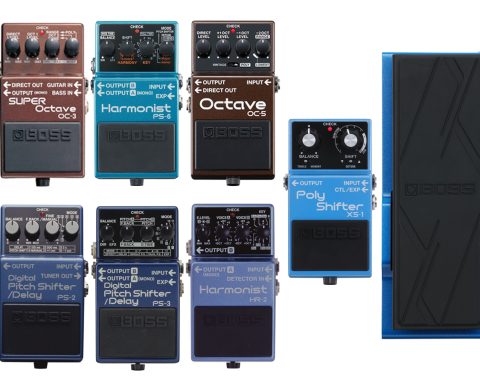When it comes to stompboxes the MT-2 Metal Zone is a giant among giants. Of the 17 million BOSS compact pedals sold to date, it ranks second only to the mighty DS-1 Distortion. Released in 1991, this year sees the Metal Zone celebrating its 30th anniversary in production as it sails past the one million mark. Imagine that for a moment: one million Metal Zones. Placed end-to-end they would make a zone of metal over 80 miles long.
A Growing Line
And that line keeps getting longer. New generations of guitarists continue to seek out and discover the MT-2’s distinctive sounds. Yet others have consistently returned to its unique tonal character and response. Those musical qualities are the same ones BOSS engineers have strived to preserve since the unit first hit the scene back in the early ’90s.
Celebrated for expansive EQ and high-gain distortion, this modern classic is an in-demand BOSS pedal. Belying its moniker, the Metal Zone has appealed to a remarkably diverse range of artists over the years. These include Prince and Sparklehorse’s Mark Linkous, as well as metal guitarists like Korn’s Munky and Megadeth’s Dave Mustaine.

"Imagine for a moment, one million Metal Zones. Placed end-to-end they would make a zone of metal over 80 miles long."
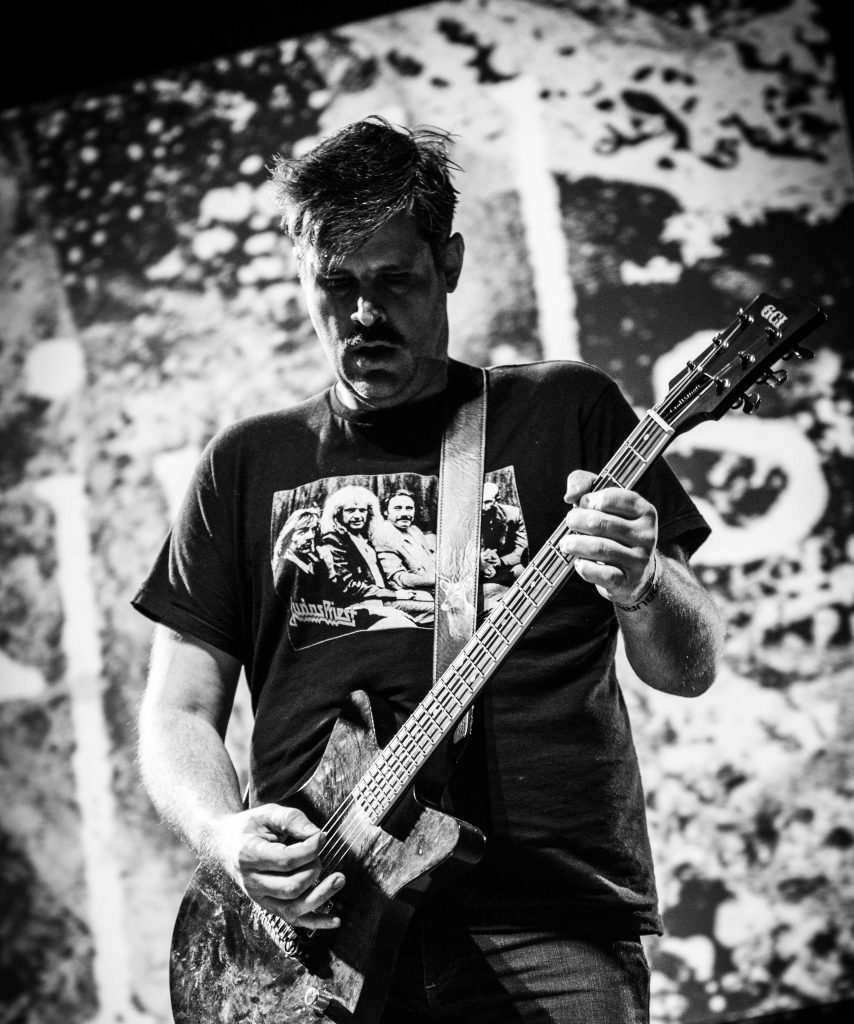
Conversing and Converging with Kurt Ballou
Then there are users like Massachusetts-based Kurt Ballou, guitarist for hardcore heroes Converge. Ballou is also an in-demand producer for heavy acts like High on Fire, Torche, and Genghis Tron. “I’ve owned a Metal Zone for quite a long time and it’s a pretty wild pedal,” shares Ballou who works out of his GodCity Studio. “The EQ is so extreme that it’s easy to get carried away.”
Ballou goes on to detail a trick he used in his band. “I briefly used it in Converge to push my old tube amps by cranking the output, keeping distortion low, and setting the EQ flat. But even then, it’s far from transparent.” That facet has tonal benefits for a player with ears as famously sharp as Ballou. “There’s some pre-emphasis EQ that’s always present which adds clarity and harmonics even at low gain,” he says.
“These days, I mostly use it patched straight into a tube mic preamp to get those blackened 4-track tones.” At GodCity Studio, the uses of the MT-2 are specific and intentional. “It doesn’t get used often, but when it does, nothing else will do.”
"There’s some pre-emphasis EQ that’s always present which adds clarity and harmonics even at low gain." -Kurt Ballou
Sculpting Metal with Biffy Clyro
Simon Neil is the revered frontman and guitarist for hard-rocking three-piece Biffy Clyro. He’s similarly found the Metal Zone a worthy addition to his tonal palette. From rehearsal rooms to arena stages, the MT-2 has been an indispensable component of his rig for years.
On hand to assist Neil in sculpting his tone with the Metal Zone is long-time guitar tech, Richard Pratt. Biffy Clyro has a well-honed sound forged throughout innumerable gigs and recording sessions. Pratt knows how important the Metal Zone has become to the guitarist.
“Simon likes buying BOSS pedals. He loves them,” Pratt begins. “We’ve tried using modified MT-2 pedals. But because they sound different to what he’s used to, he’s like, ‘Nope.’” Indeed, Neil likes his pedals right off the factory floor. “It’s got to be a regular factory issue MT-2 that anyone can buy,” Pratt says.
A seasoned touring tech, Pratt’s appreciation for the MT-2’s reliability is palpable. “They’re great value and we’ve found them to be very consistent over the years,” he explains. “From a guitar tech’s point of view, they’ve been fantastic. The Metal Zones have held up better than most things over the years. They’re solid.” Like his employer, Pratt praises the model’s consistency. “I’ve not noticed any perceivable difference from one unit to the next.”

"From a guitar tech’s point of view, they’ve been fantastic. The Metal Zones have held up better than most things over the years." -Richard Pratt, Guitar Tech (Biffy Clyro)

EQ and Super Saturation
While the MT-2 receives acclaim for its super-saturated distortion sounds it is also renowned as being one of the most dynamic pedals of its type. This is courtesy of its advanced EQ controls. The tweakable Equalizer section of the Metal Zone has three sections: High, Low, and Middle.
With its High shelf EQ and Low EQ, both the top-and-bottom-end frequencies can be independently cut or boosted by at least 15dB. At the same time, a sweepable Middle EQ is adjustable within a range of 200Hz to 5KHz. With such a broad spectrum of tones available to experiment with, users can explore a huge variety of sounds. With a little bit of know-how, they can sculpt their perfect distortion setting.
Scooping Specs
“Simon’s got the Level up to 3 o’clock and the Distortion set to just over halfway,” reveals Pratt. “We’re pushing the Low to 3 o’clock; High is at 12 o’clock, and we pull both the midrange knobs back to around 10 o’clock. The Low boost gives the sound girth. It’s a big, serious, scooped distortion.”
Pratt shares his thoughts about how this all works. “The distortion comes from the pedal’s dual-clipping design—or amp clipping followed by diode clipping. I believe the circuit has both pre-and-post-distortion tone shaping.”
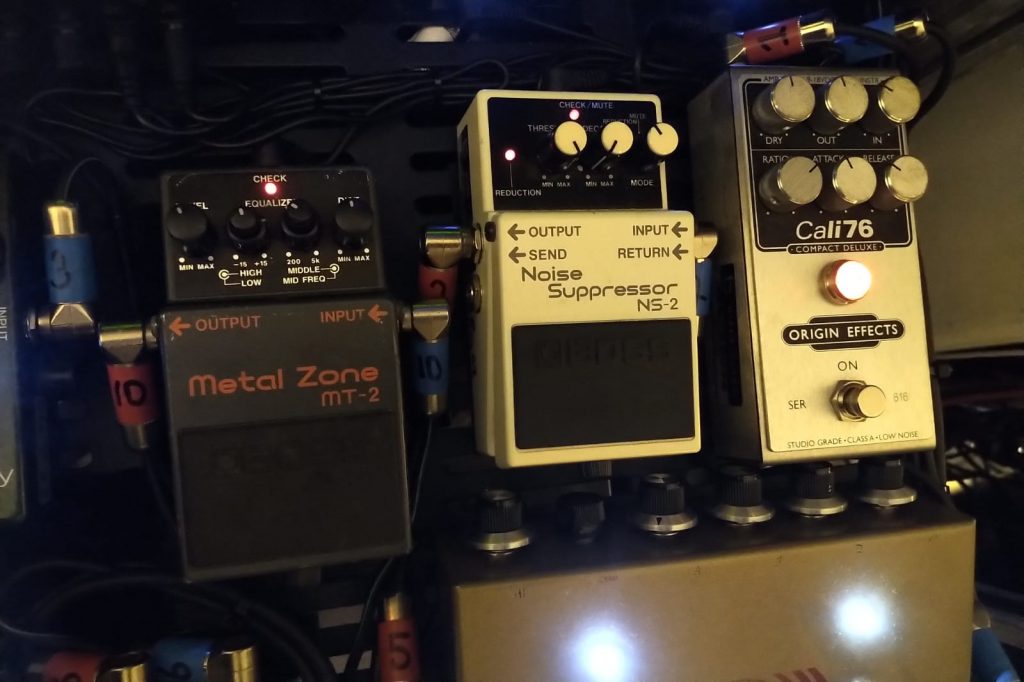
"For Biffy Clyro, it’s about not reinventing the MT-2's tone, but embracing it."

Photo Courtesy of Richard Pratt
The Shape of Things
That shapeable aspect of MT-2 is another reason it’s so essential in the Biffy Clyro arsenal. “The tone-shaping before the clipping/distortion gives you a bit of a midrange hump cantered around 1KHz,” Pratt says. “Afterward, it does more of the scooping with peaks at around 100Hz and 5KHz.”
To Pratt, this is a great idea as “once you’ve distorted something it can become quite hard to push the midrange.” Again, for Biffy Clyro, it’s about not reinventing the MT-2’s tone, but embracing it. “Simon likes it because it’s a true analog pedal,” Pratt reveals. “I think that’s what gives the Metal Zone its basic character. There are a lot of digital distortions available, but he finds he doesn’t get the same response between the guitar and the cab with those.”
A Wall of Sound
By using three amplifiers, each with its distinctive voice, Neil can create a formidable, albeit balanced, backline. “It’s like a guitar chorus,” exclaims Richard. “He’s got a Fender running clean down the middle, so you can always pick out the notes.”
They also have an Audio Kitchen The Big Trees which fills up the midrange of the distortion. “That’s cranked, but it’s transparent,” Pratt says of the boutique amp. “And then with the Metal Zone through the Marshall 1959 SLP, we’re pretty much covering every single frequency.”
Still, there’s no concern about overdoing the distortion. “We’re not too worried about the Metal Zone being completely oversaturated. It’s like a wall of sound. That’s how they get away with sounding so big as a three-piece.” Pratt feels it’s the fact that it’s “one guitar and three amps panned front of house in such a way that it sounds enormous.”

"We’re not too worried about the Metal Zone being completely oversaturated. It’s like a wall of sound." -Richard Pratt, Guitar Tech (Biffy Clyro)

Preaching to The Guitar Choir
Pratt goes on to reveal that some players use a Metal Zone for a more midrange-focused distortion. By contrast, Neil likes to “really push the fizz on the top.” and the weight of the low-end with the Marshall. The MT-2 takes to this treatment beautifully. “It just really loves that top and bottom-end, and it fills out everything the Fender and the Audio Kitchen amps aren’t doing. It’s all part of the guitar choir.
The knowledgeable tech believes Neil’s Metal Zone setting fits in with the sound of the other amps. “Essentially, we’re using EQ to get them to fit around each other. Getting that balance right can be quite hard. Although it’s easier and more consistent now we’re mostly playing arenas.” This is another benefit of the band’s massive success. “With clubs, you’re more at the mercy of what the room sounds like.”
The Right Amp
When it comes to distortion, choosing the right amp to plug into can make all the difference. This is the case as results may change drastically from one to the next, even with the same pedal settings. “Because of its enormous gain, we can only use the MT-2 if we use an amp with enough headroom,” underscores Richard.
“If we don’t, it can sound like the midrange is a bit too fizzy. Volume is also another factor that changes the tone of the MT-2.” For this reason, Neil sticks with his 100-watt 1959 Super Lead reissue Marshall. As well as being able to handle the gain jump of the Metal Zone, Pratt praises the low-end response.
“It can transmit that sound to the speakers. We only tend to use it with a 4×12. Otherwise, Simon doesn’t get that response between his guitar and the speaker.” It’s the interaction that makes it work. “When you get on stage with a Metal Zone and a 4×12 behind you it’s just something else.”
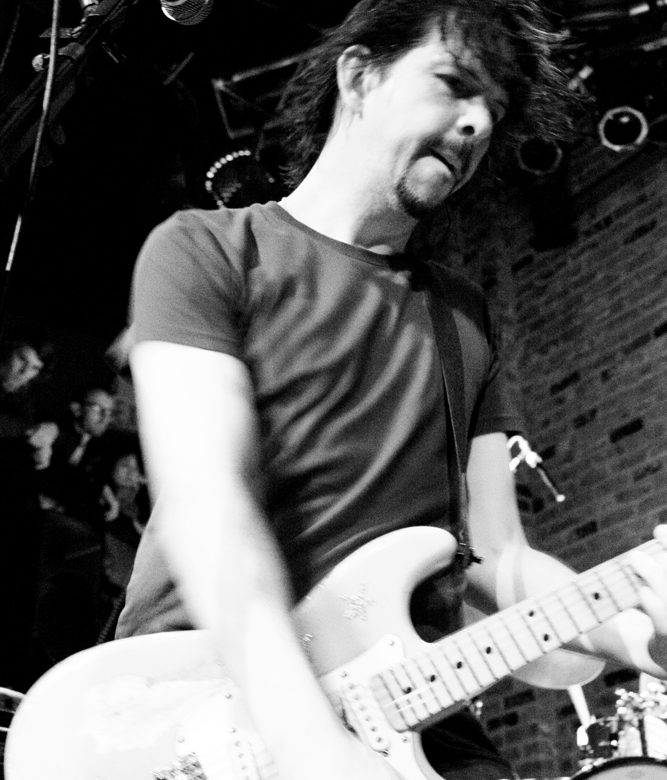
"When you get on stage with a Metal Zone and a 4x12 behind you it’s just something else.” -Richard Pratt, Guitar Tech (Biffy Clyro)

Player’s Choice
Simon Neil famously plays Stratocasters. Still, the sound he achieves with the MT-2 is as substantial as any humbucker-equipped guitar. “Simon plays a Strat, which is a different sound to say a Les Paul or anything else with humbuckers,” explains Richard.
“He mostly uses Texas Special pickups, along with a 60s-style set from the Fender Custom Shop. Being overwound, the Texas Specials are quite midrange-focused. Because we’re using so much gain with the Metal Zone, the subtle differences between pickups are negligible.”
There is another key pedal at play in Neils’s setup. “We have a compressor at the very front of the chain to tame things when he digs into the Strat.”
Obeying The Golden Rule
Pratt highlights a specific song as an example. “For some moments, like in That Golden Rule where it’s a gated chug-chug-chug sound, we’ve got one of the BOSS NS-2 Noise Suppressors on full.” This removes the inductive hum the guitar might be picking up by closing off the signal. He explains that Neil doesn’t leave it on as he often wants his guitar to feed back when he takes his hand off the strings.
“He only likes to use the NS-2 Noise Suppressor when there’s a specific purpose for it. So, maybe two or three times in the set he’ll turn it on.” There are exceptions, however. “Now and then, I’ll switch the Noise Suppressor from the pedalboard offstage. If he’s forgotten to turn something off, I’ll sometimes take care of that for him.”
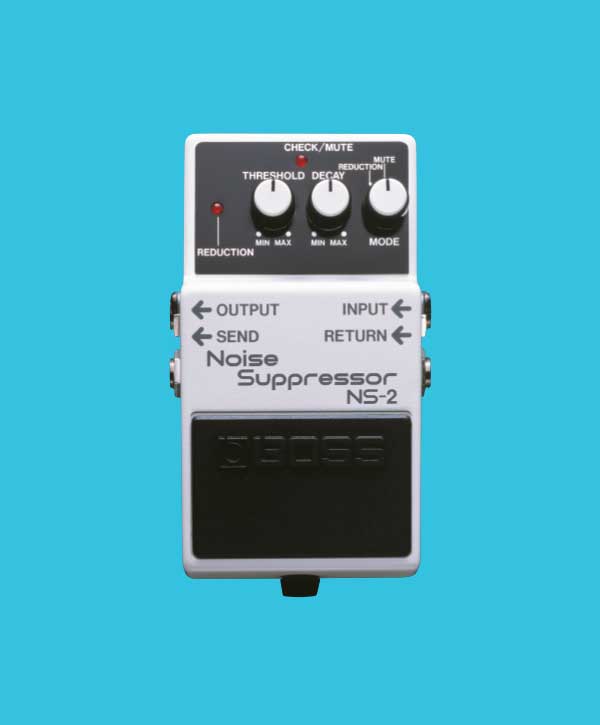
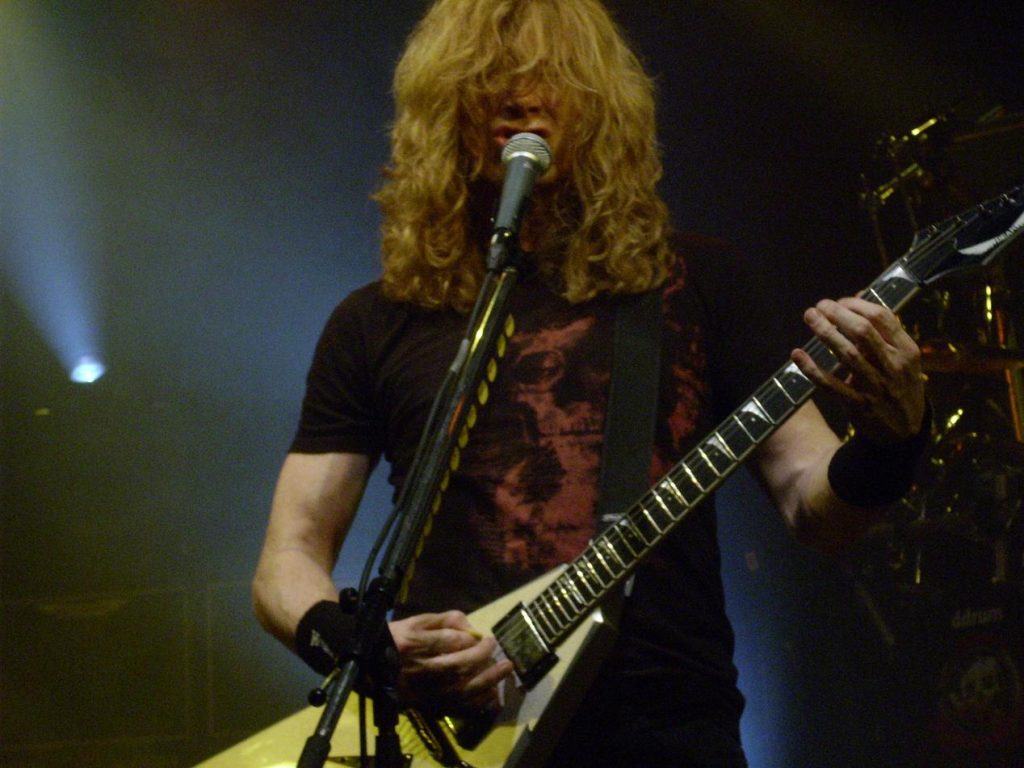
Metal Zone + Volume
When it comes to tracking with the MT-2, Pratt has some tips based on experience. “We struggle recording the Metal Zone with a posh mic because the volume is too much for most of them,” he says. “It wipes out something like a ribbon mic.”
The band has discovered that to get the Metal Zone sounding its best they need volume. “Normally, we use a standard dynamic mic that can handle the serious levels of volume levels we’re chucking at it.”
"The MT-2W’s Custom mode produces a wider range of tight, focused contemporary tones."
The Stompbox Stratosphere
The trend toward embracing pedals is one Pratt appreciates as a tech. “I love the fact that people have been getting back into stompboxes more and more in recent years,” Pratt says. In his mind, digital modeling has its place. Still, there’s nothing like grabbing the controls and turning up without going through a menu. “
Guitarists can get so bored so fast,” he says with obvious first-hand experience. “They don’t always want to be programming computers. Not when all they want to do is turn the volume up or down.”
For Simon Neil and Biffy Clyro, the hands-on experience is part of what makes their music so visceral. “The tactile difference of turning a knob and stomping on a pedal is something else,” Pratt says with conviction. “So, I can’t see the Metal Zone disappearing any time soon.”


With so many contemporary guitarists relying on its unique distortion, there are no plans to retire the MT-2. To that end, in 2018, the Metal Zone joined the ranks of BOSS’ esteemed WAZA CRAFT line. It was reborn in the form of the MT-2W.
Though the MT-2 still proves as popular as ever, the WAZA version is available concurrently. It retains the character of the original design, albeit with some enhanced features available across two modes. It boasts quieter operation with a lower noise floor in Standard mode. Additionally, the MT-2W’s Custom mode produces a wider range of tight, focused contemporary tones.



